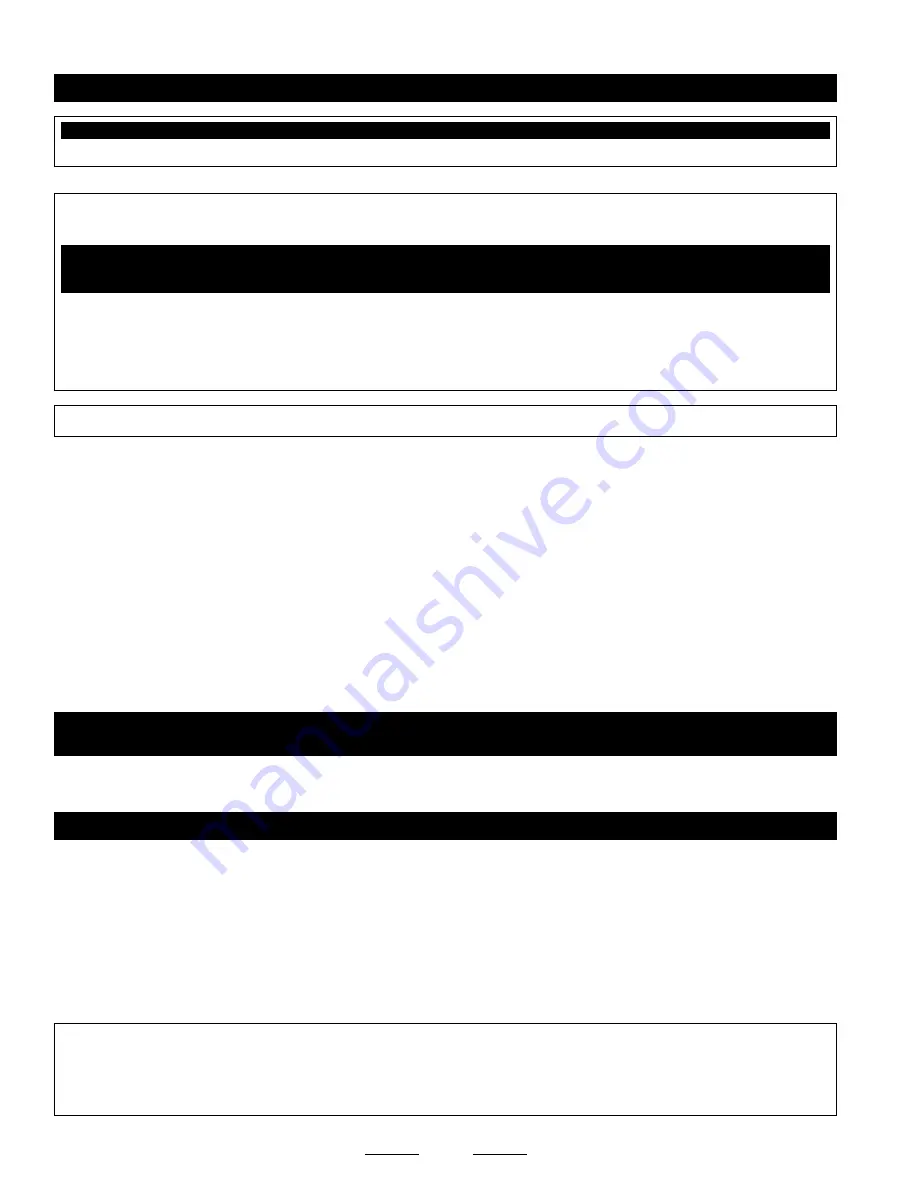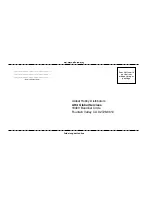
36
✦
✦
✦
✦
✦
IMPORTANT
✦
✦
✦
✦
✦
It is critical that your airplane be balanced correctly. Improper balance will cause your airplane to lose control
and crash!
Center of Gravity Location:
4-1/2" - 5" (114mm-127mm) back from the leading edge of the wing, measured at the fuselage sides.
✦
✦
✦
✦
✦
WARNING
✦
✦
✦
✦
✦
This is the recommended C/G range.
FOR TEST-FLYING WE SUGGEST YOU START WITH THE C/G AT 4-3/4" (121MM), then move it farther back as you
become familiar with the flying characteristics of the airplane. It is not recommended that the C/G be located any farther
back than 5" (127mm).
✦
✦
✦
✦
✦
IMPORTANT
✦
✦
✦
✦
✦
Balance the Speedy Bee ARF with the fuel tank
empty and the airplane fully assembled.
❑
Install the wing onto the fuselage.
❑
Apply two short pieces of masking tape onto the
bottom
of the wing,
4-3/4" (121mm) back from the leading edge, measured
at the fuselage sides.
❑
Place your fingers on the masking tape, and carefully lift the airplane. If the nose of the airplane falls, the airplane is nose heavy.
To correct this, move the battery pack and/or receiver back far enough to bring the airplane into balance. If the tail of the airplane
falls, the airplane is tail heavy. To correct this, move the battery pack and/or receiver forward far enough to bring the airplane into
balance. When balanced correctly, the airplane should sit level or slightly nose down when you lift it up with your fingers at the
C/G location.
☞
Once you have flown and become familiar with the flight characteristics of the airplane, the C/G can be moved fore or aft within
the C/G range to change the flight performance. Moving the C/G back will cause the airplane to be more responsive, but less stable.
Moving the C/G forward will cause the airplane to be more stable, but less responsive.
DO NOT FLY THE AIRPLANE BEYOND THE RECOMMENDED BALANCE RANGE OR AN
UNCONTROLLABLE CRASH COULD RESULT!
SECTION 19: BALANCING THE SPEEDY BEE ARF
❑
Ruler
❑
Masking Tape
YOU'LL NEED THE FOLLOWING TOOLS AND SUPPLIES:
SECTION 20: CONTROL THROWS
The control throws listed in this section are for test-flying and general sport-flying. If you want the airplane to be more aerobatic and
responsive, we suggest increasing the control throws in small amounts until you find your desired settings.
✦
✦
✦
✦
✦
IMPORTANT
✦
✦
✦
✦
✦
The control throws are measured from the widest point of the control surfaces.
✦
✦
✦
✦
✦
VERY IMPORTANT
✦
✦
✦
✦
✦
After you are finished adjusting the pushrods and control throws, we strongly suggest cutting 1/4" lengths
of the clear vinyl tubing provided and sliding one piece over each clevis. The tubing will prevent any chance of the clevises
opening during flight.
Ailerons:
1/2" (12mm) Up & 1/2" (12mm) Down
Elevator:
5/16" (8mm) Up & 5/16" (8mm) Down
Rudder:
3/8" (10mm) Right & 3/8" (10mm) Left
TEST-FLYING and GENERAL SPORT-FLYING









































